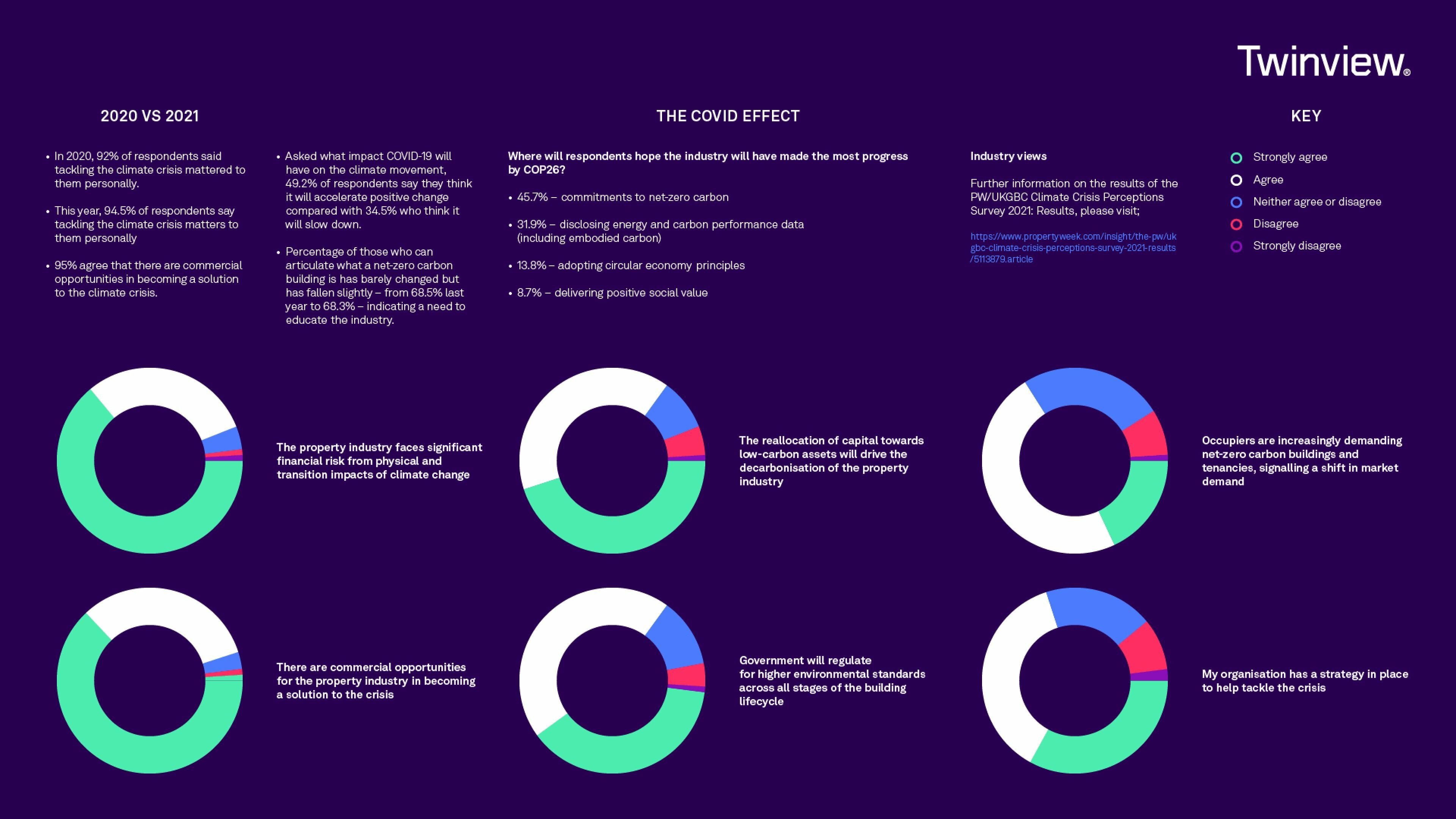25 May 2021 | Industry Insights
Climate Crisis Perceptions 2021

With COP26 on the horizon and recovery from the COVID-19 pandemic underway, we take a look at the results of the second Property Week/UKGBC Climate Crisis Perceptions Survey as they come at a vital time in relation to the climate crisis.
When respondents were asked if the climate crisis mattered to them personally, 92% agreed with the statement in 2020 which increased to 94.5% in 2021, signalling that climate change is having an effect on more people.
The percentage of those who are able to articulate what a net-zero building is has fallen by 0.2% to 68.3%. Although this is a step in the right direction, it is minimal and since buildings account for 39% of CO2 emissions globally, this indicates a need to educate the industry.
Respondents hope that the industry will have made the most progress on commitments to net-zero carbon by COP26. A clear winner with 45.7% of the vote, closely followed by disclosing energy and carbon performance data (including embodied carbon) at 31.9%. Other actions include adopting circular economy principles at 13.8% and delivering positive social value at just 8.7%.
Source: https://www.propertyweek.com/insight/the-pw/ukgbc-climate-crisis-perceptions-survey-2021-results/5113879.article
Related insights

Case Studies
Enhancing Healthcare Environments Through Intelligent Space Optimisation: Twinview at Eastbourne District General Hospital
East Sussex Healthcare NHS Trust is enhancing the way space is managed at Eastbourne District General Hospital with Twinview’s digital twin technology. By enabling real-time visibility of room occupancy and usage across clinical and office areas, Twinview provides a clear picture of how spaces perform throughout the day. Hospital teams can move from assumption-based planning to data-driven decision-making, improving scheduling, reducing downtime and making more flexible use of rooms. This smarter approach supports greater operational efficiency and helps ensure that every space is working to benefit both patients and staff.
Read more

Industry Insights
Data Centres: The Hidden Cost of the Cloud
As the cloud expands, so does its unseen demand for water. Data centres worldwide are consuming vast volumes to keep servers cool, creating growing environmental and reputational risks. This article explores how water is becoming the next frontier in data-centre sustainability, and how Twinview’s digital-twin technology is helping operators measure, manage and reduce their impact.
Read more

Industry Insights
Can Digital Twins Help Us Design Buildings That Bring People Together?
Loneliness is increasingly recognised as a public health issue, and the built environment has a role to play in addressing it. A well-designed building can meet every technical standard yet still leave people feeling isolated. Homes, workplaces, campuses and later-living communities often fall short not because they lack function, but because they lack connection. Architects and planners are beginning to ask a deeper question: how can buildings help people feel less alone? This isn’t about surveillance. It’s about feedback, helping designers and operators refine buildings after handover to better support wellbeing and social interaction. Technology won’t solve loneliness on its own, but used responsibly, digital twins like Twinview can guide the creation of buildings that feel more human.
Read more

